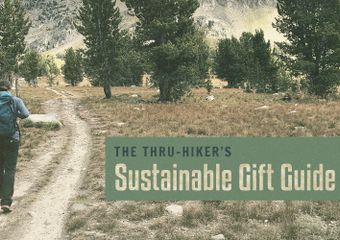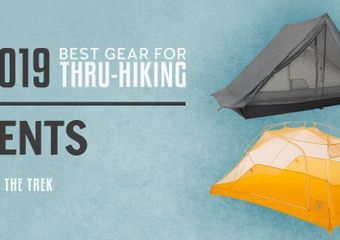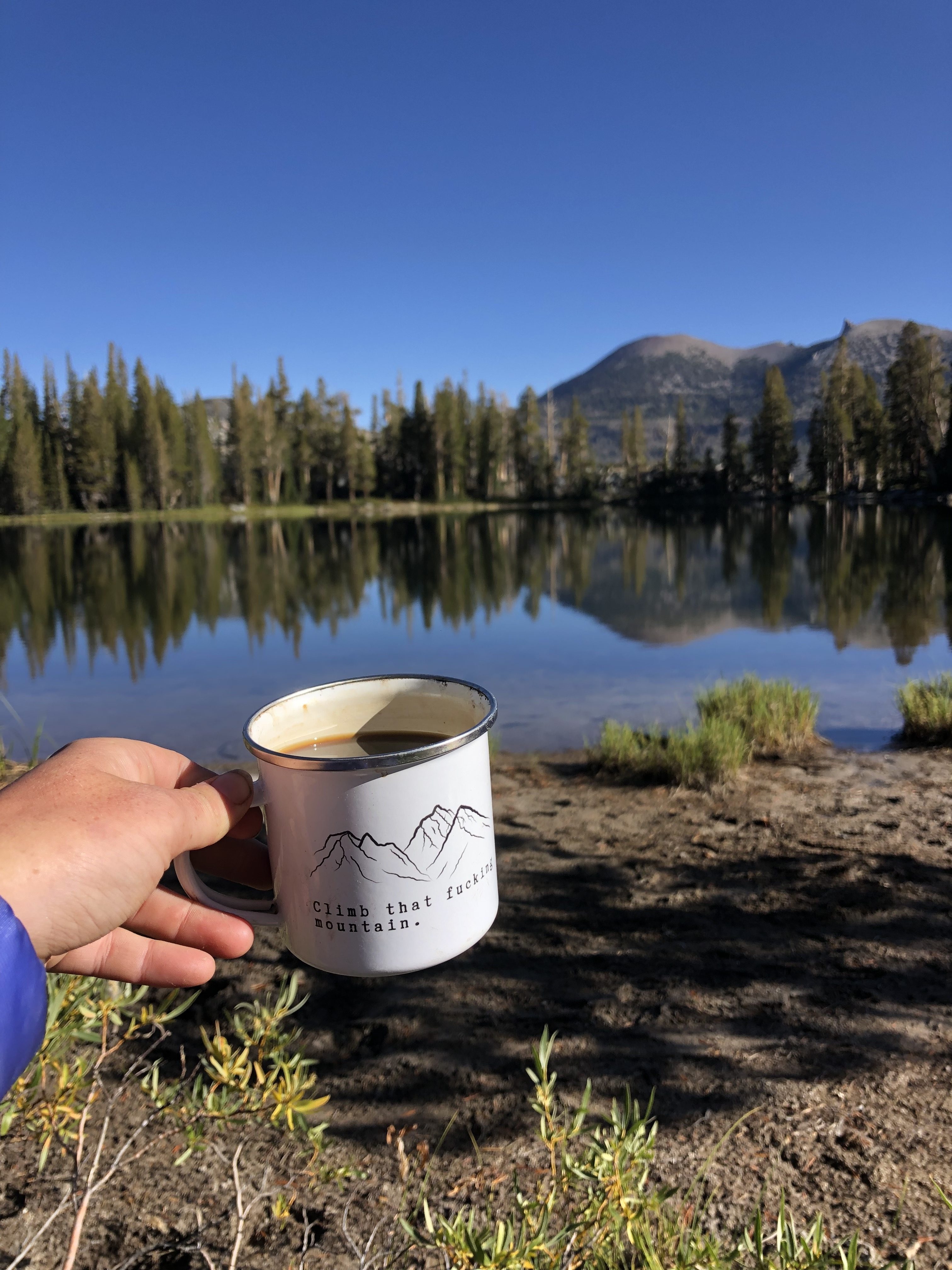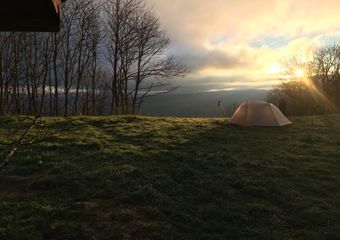10 Thru-Hiking Tips to Reduce Environmental Impact
As thru-hikers, we’re already traveling off the beaten path. In an era of single-use plastics, disposable toiletries, and landfills the size of small islands, hitting the trail for months at a time is a step toward helping our beloved planet. Being able to fit all of my garbage into one plastic bag for days at a time showed me how much waste I was saving by living on the trail. However, there are always areas to improve and ways we can reduce our waste even when living out of a 50-liter pack.
1) Take Advantage of the TerraCycle Program
If you’re one to rely on freeze-dried meals while thru-hiking, you know how bulky those plastics can be. Instead of tossing them into the garbage, several companies encourage consumers to participate in TerraCycle. Backpacker’s Pantry and Mountain House both offer this innovative recycling strategy as a free waste-reducing option for hikers. With an online order at Backpacker’s Pantry, you can request a return recycling shipping label, which can be easily mailed out of any stop in town. Yes, this is one more thing to carry, but it’s worth it. For Mountain House products, you can print a shipping label right in town, box it up, and send it out. All free of charge.
2) Buy Quality Gear
We’ve all heard it: buy well, buy once. Before making large purchases, such as a tent, sleeping bag, or backpack, do your research. Choosing items that are specifically built for thru-hiking and long-distance treks helps avoid early wear and tear, saving both money and the environment in the long run. Sale and discounted items may be extremely enticing, but may result in an additional purchase sooner than necessary.
3) Shop REI Garage Sales and Other Used Gear Programs
We all know REI’s generous return policy, but may fail to take advantage of these products coming full cycle. With like-new and usable returned gear, REI hosts garage sales for its members. If you can’t make one of these events, REI recently launched an online used gear store as well. Quality gear can be pricey, and this helps keep gear out of the landfills and in the backcountry.
4) Replace Single-Serving Bars, Trail Mix, and Instant Coffee with Bulk Options
This applies to resupply boxes and grocery hauls in town. It’s convenient to have wrapped, individual bars and snacks, but that extra plastic adds up quickly. Many grocery stores have bulk sections where you can fill up on nuts, dried fruit, and other goodies for one bag of homemade trail mix. Plus, you won’t have to pick out all of the gross raisins. Replacing single-serving snacks with bulk items makes a significant reduction in waste, and can save money as well. This also applies to instant drinks such as coffee. Instead of buying single-serving packets, consider a larger can and transferring it into a plastic (or reusable!) bag. Being mindful and cutting down on single serving snacks and utilizing TerraCycle programs means almost zero waste from food. Pretty impressive for a thru-hiker.
5) Utilize Reusable Hygiene Replacements
We’ll all need to wipe our butts. But there are ways to make sure those few precious squares of toilet paper we use are as environmentally friendly as possible. For ladies, investing in a Kula Cloth is a complete game changer. This reusable, absorbent pee square saved us from having to choose between using extra toilet paper or dealing with slightly damp shorts. As far as those situations where single-use toilet paper is unavoidable, there are post-industrial recycled content options available. This company uses bamboo and recycled paper to make their bathroom tissue. Investing in this sustainable swap definitely isn’t cheaper than stealing a few squares from the occasional pit toilet, but will make an impact nonetheless.
Women unfortunately have another hygiene issue to consider. A menstrual cup not only saves waste from single-use tampons and pads, but also is an enormous space and weight saver. There’s a few different brands to choose from, many of which are available in stores at CVS, Target, or online.
6) Follow Leave No Trace Principles

An incredible view, made even better that we were far enough from water and the trail to be LNT compliant.
In order to stay up-to-date on all the latest Leave No Trace guidelines, it is an imperative to check their website and brush up on all updated rules. In recent years lnt.org has included a new resource on how to geotag and use social media consciously. It’s up to all of us to keep these trails wild and pristine as possible for future generations to come as social media draws more visitors to the areas. Plus, we could all use a reminder to make sure our campsites and footprints leave as little impact as possible.
7) Use a Microfiber Filtering Laundry Bag
This is an investment that will help our water systems at home and on trail. These laundry bags are designed to protect our clothes from releasing harmful plastic fibers into our waterways. While on the trail, this is a crucial way to ensure our clothes aren’t harming the streams and rivers we all benefit from in the backcountry. Also note that it is best practice to gather water and wash clothes elsewhere to prevent the stream of sunscreen, bug spray, and other unnatural products into our waterways.
8) Keep a Reusable Garbage Bag
To be honest, I didn’t think twice before tossing my gallon-sized garbage bags with all my trash at each resupply. There was absolutely no reason for me to do this. I could’ve just as easily dumped all the trash out of the bag and refilled it. Or, better yet, brought along a lightweight reusable trash bag to avoid the use of any plastic.
9) Carbon Offsetting Plane and Car Travel
Many of the thru-hikes I’m eyeing require a bit of travel. Carbon offsetting is not a perfect solution to reducing our transit impact, but it’s a step in the right direction. Basically, for a minuscule purchase (around $2 or more if desired), you can offset the miles you traveled with these funds going straight toward emissions-reducing projects. The Good Traveler is a wonderful resource for all questions regarding carbon offsetting benefits.
10) Replace Toiletries with Plastic-Free Options
Bamboo toothbrushes are gaining in popularity, and are a lightweight options to replace plastic brushes. Replacing plastic toothpaste tubes with bite-sized toothpaste bits is additionally an environmentally and weight friendly way to cut down on waste. This also saves us frugal thru-hikers from squeezing every last drop out of a long empty toothpaste container. Another simple money and plastic saving tip is to avoid buying single-use travel-size toiletries and invest in reusable tubes to refill with soap, lotion, or whatever helps you feel clean while living outdoors.
When it comes to protecting our beloved trails and environment as a whole, it’s up to all of us. Many of these tips may seem insignificant, but each small reduction in plastic use adds up quickly. As the time of year approaches when we are all dreaming of hitting the trail and may be planning trips for 2020, it’s imperative to consider ways we can reduce our impact.
This website contains affiliate links, which means The Trek may receive a percentage of any product or service you purchase using the links in the articles or advertisements. The buyer pays the same price as they would otherwise, and your purchase helps to support The Trek's ongoing goal to serve you quality backpacking advice and information. Thanks for your support!
To learn more, please visit the About This Site page.









Comments 15
Thank you for these tips.
Blogger at https://bestcrossbowguide.com/
Thank you for reading!
Katie, I’m so glad you wrote this blog. When on the AT the past few summers, I really struggled with how to justify all the single use plastic I was using. Unfortunately, because of my need for self-dehydrated gluten-free food, my meals will still have to be stored in plastic ziplocks. But I will make more of an effort to find recycling bins for plastic bags in supermarkets when in towns. I am also very happy to learn about the Kula cloth.
You speak my language. Let’s do everything we can to reduce the use of single use plastics which are filling our oceans.
Hey Ruth,
You could just wash and reuse the zip lock bags? No? There is also a silicone bag called stasher that might be a thing for you? That would be my best bet. Recycling is great to do, but it is just not the answer since too much that could theoretically get recycled end up on landfills sadly… So whenever you can: Refuse, Reuse, Reduce, Rot and last but not least, Recycle 😉
https://www.thehappychoices.com
I agree about reusing the ziplocks, and I do this at home all the time. But when on the trail for months, that can be complicated. My food packs from home most often are mailed to hostels. I’d like to be able to get to the post office in order to mail my washed and dried ziplocks home for reuse, but the timing and logistics of that can be complicated and add yet more to do on my zero day, when I really need to rest. What I might consider is having a business sized self addressed stamped envelope for my washed, salvageable used ziplocks tucked in each mail drop and asking the hostel owners to just add this envelope to their outgoing mail. Easy.
I agree wholeheartedly that it’s worth the extra effort to reduce the amount of plastic that is used once and then floats in our oceans forever. We backpackers obviously love and appreciate our earth, so it’s time we do whatever we can to help preserve it.
That’s an awesome idea. The only trail I’ve done was the JMT, where gross ziplocks for 18 days are no big deal but after months that could be a health hazard… lol. Before a longer thru-hike I’m thinking of investing in some of the hard plastic reusable bags you can find at REI etc. so they will be more durable. But I still don’t think I’ll want to put my toilet paper in there….
Yes!!! Refuse is so often missed – arguably the MOST important sustainability tip!!!
Let’s do it!! I’m so happy to point you in the direction of Kula – seriously more than half of the women I met on the JMT were sporting a cute lil pee cloth!!! It’s such an incredible idea run by a powerhouse of a woman. I feel like it’s easier to justify plastic use because you’re not driving or contributing to so many other environmental problems on the trail, BUT we can still do the best that we can!!!! Keep motivated others, thanks for your engagement 🙂
Definitely agree about buying quality gear, just makes good sense…
http://whiteblazedaze.com/
Absolutely! I’ve definitely gotten caught up in trying to find the best deal, when I really should be thinking about how long of a lifetime that product will have.
One suggestion, one observation: toothpaste? Suggest a small screw top Nalgene filled with Baking Soda. It fulfills a true Thru-Hiker’s mantra of one thing suitable for many uses…. and, a small amount goes along way, keeping the weight down as well. Observation: your photo of a “LNT” compliant campsite is questionable. LNT ethics say 200 feet (70 paces) from trail or water. Judging by the footpath width in the pic, unless there’s some weird depth perception thing going on, I’d venture that that tent is not 200 feet away from either the trail or water. Picturesque nonetheless. Saunter on.
that’s a good suggestion for toothpaste as well! The whole thing about toothpaste bites is that it reduces the plastic used in tubes altogether, but any way to make products last longer will definitely make it more sustainable 🙂
And yes, the photo was taken by a skilled photographer from a vantage point that shrinks the width in the photo to be able to capture the surrounding mountains. Thanks for your concern 🙂
Awesome! All the tips you share are really important and helpful thanks for sharing Katie.
Blogger at AWL Golf
Thanks so much for giving it a read! Happy trails 🙂